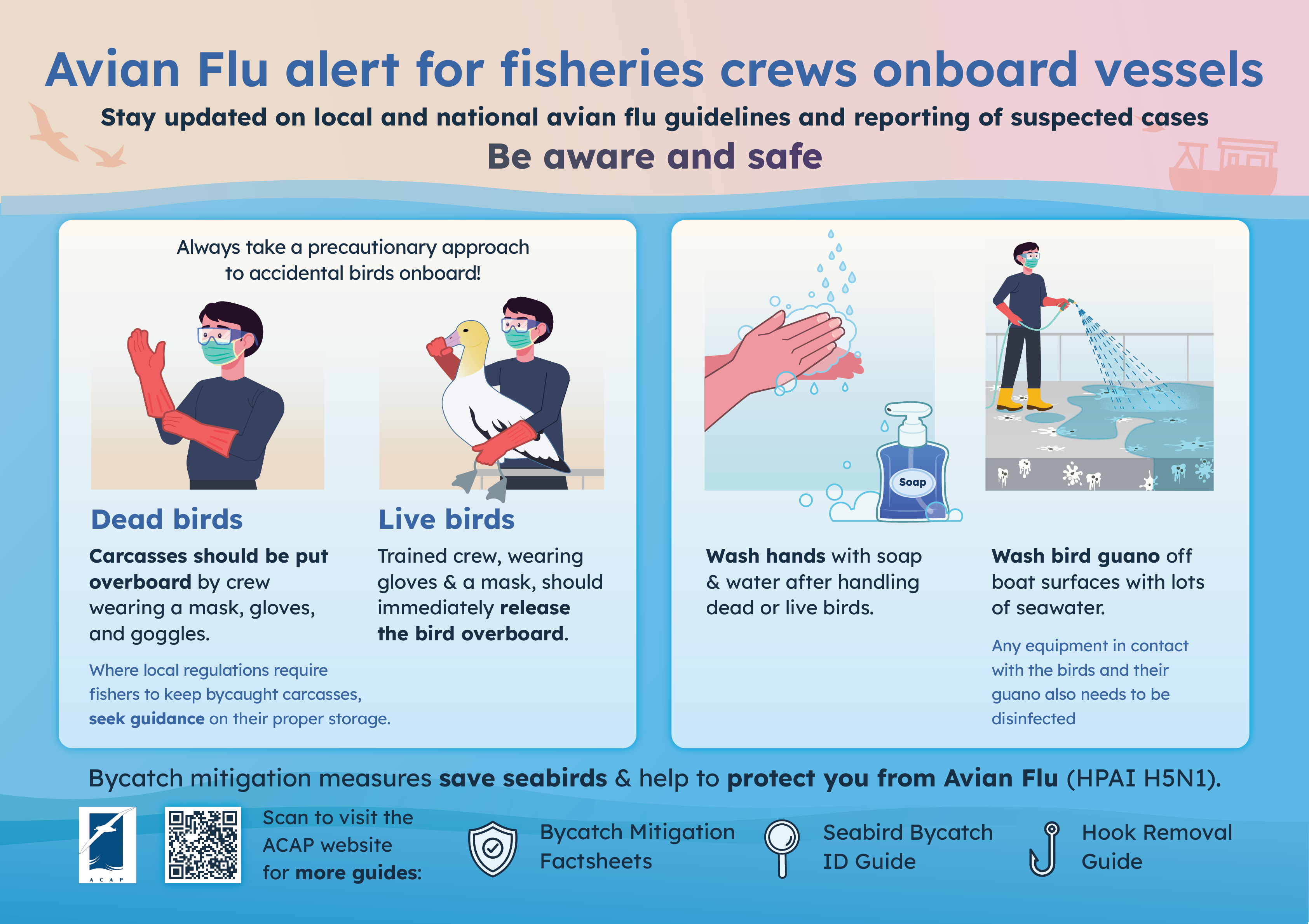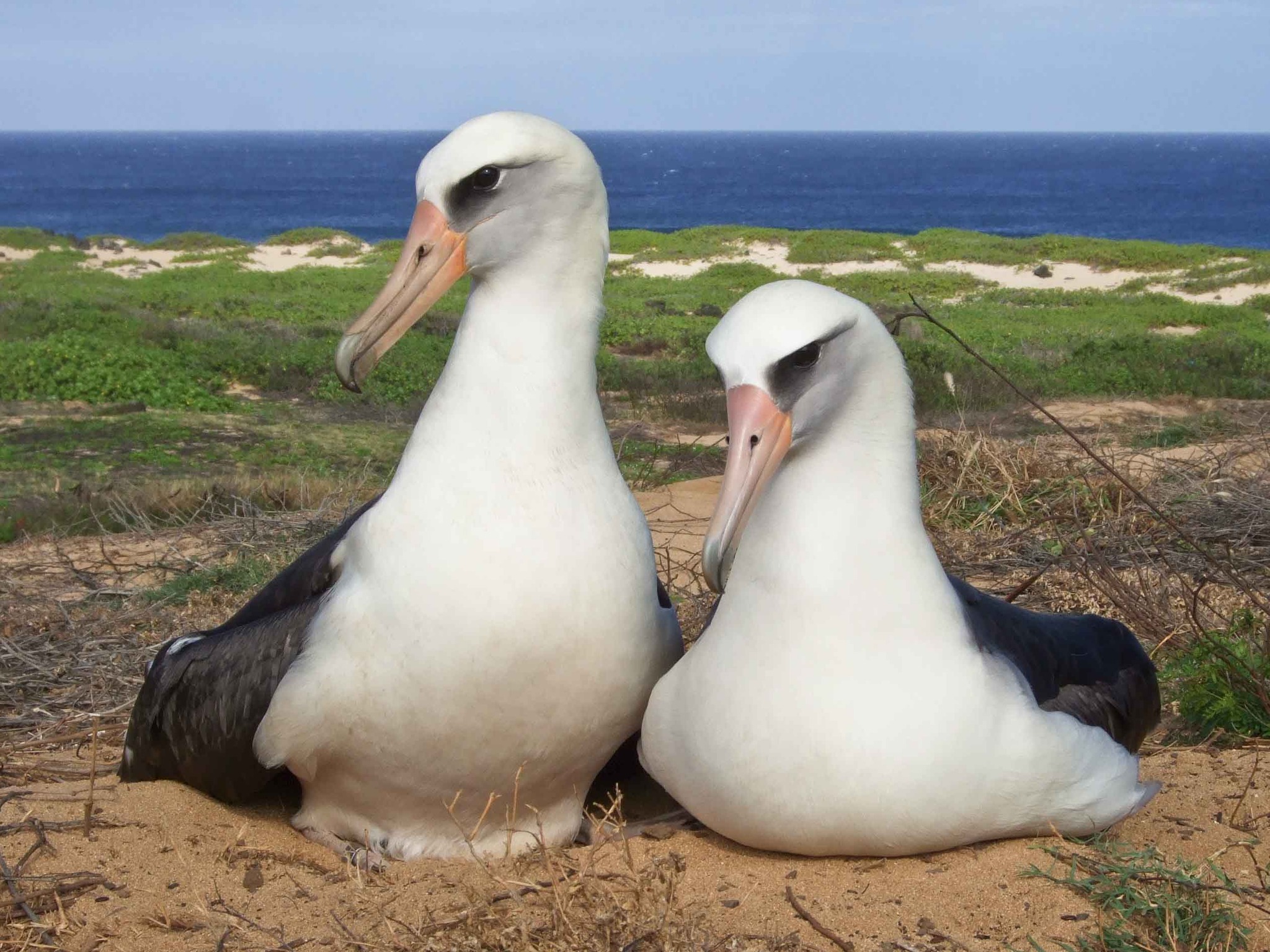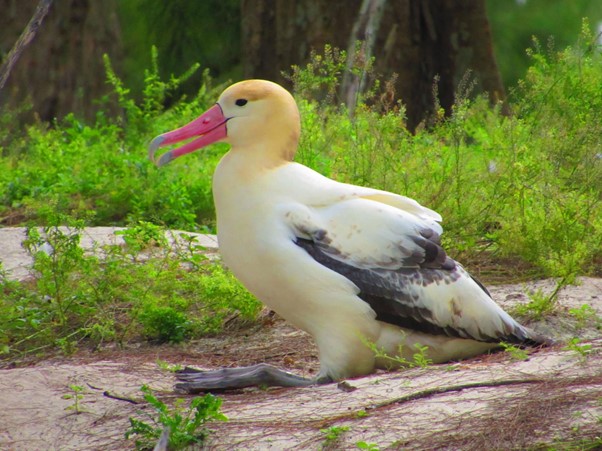
“Forest Bird”, a sub-adult Short-tailed Albatross on Sand Island, Midway Atoll, photograph by Nikki Prescott
The solitary pair of Vulnerable Short-tailed Albatrosses Phoebastria albatrus that breeds on the Midway Atoll’s Sand Island in the North Western Hawaiian Islands are well known. Affectionally named George and Geraldine, they have fledged five chicks out of six annual breeding attempts since 2018/19. No chick was produced in the 2021/22 breeding season as the egg did not hatch. They are now incubating their seventh egg together.
 George incubates the 2024/25 egg, December 2024, photogroph by Jon Plissner
George incubates the 2024/25 egg, December 2024, photogroph by Jon Plissner
George, the male of the pair, a bird in adult plumage, has been visiting Midway Atoll since November 2006 (when he was known as “Lonesome George”). He hatched from the colony on Japan’s Torishima in 2003 and was banded there as a chick. Geraldine is still in sub-adult plumage and is thought to be an individual that was banded on Torishima in April 2008. She was first observed on Midway in early 2012. The two birds were first seen together on the island in late 2016 (click here).
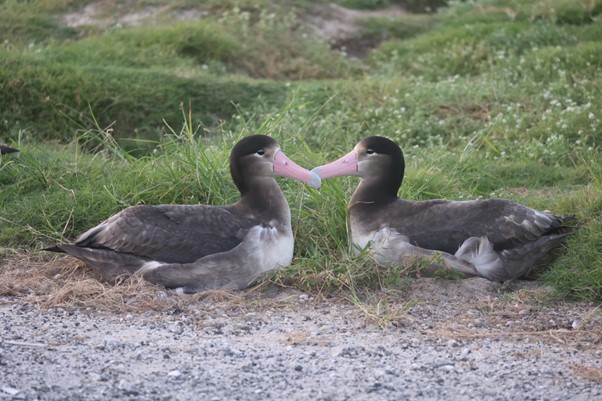
Two offspring of George and Geraldine meet up on Midway Atoll, photograph by Jon Plissner
On 26 November, two of George and Geraldine’s colour-banded fledglings were photographed close together back on the island as juveniles “within a few feet from Geraldine, their mother” who was then incubating. The oldest (from the pair’s 2019/20 breeding season) has previously been seen on Midway, the younger (2020/21 breeding season) was seen for the first time. In April 2024 the 2022/23 fledgling was seen back on the island, displaying with the 2019/20 bird.
A fifth banded Short-tailed Albatross, a sub-adult of the same Torishima cohort as Geraldine, is known as “Forest Bird” and resides elsewhere on the island, “alone a mile away from his own kind”. The Friends of Midway Atoll National Wildlife Refuge writes on its Facebook page: “What would improve the chances of Midway hosting a colony of Makalena [Hawaiian name for the Short-tailed Albatross] is if the so-called Forest Bird … flew on over to the other side of the island. If you have some creative ideas, please do share” Perhaps offer Forest Bird a lift in a golf buggy?
Previously, a different pair of Short-tailed Albatrosses bred successfully three times in four years on the atoll’s Eastern Island, the last time in 2013/2014. In November 2014 the male of the pair was found dead on the island.
Information from the Facebook page of the Friends of Midway Atoll National Wildlife Refuge.
John Cooper, Emeritus Information Officer, Agreement on the Conservation of Albatrosses and Petrels, 23 December 2024
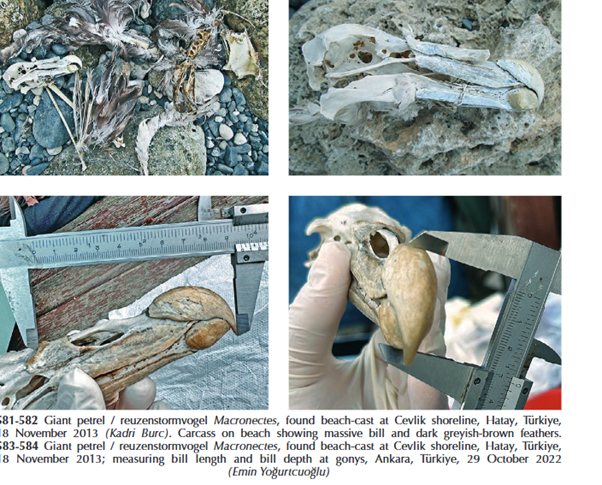

 English
English  Français
Français  Español
Español 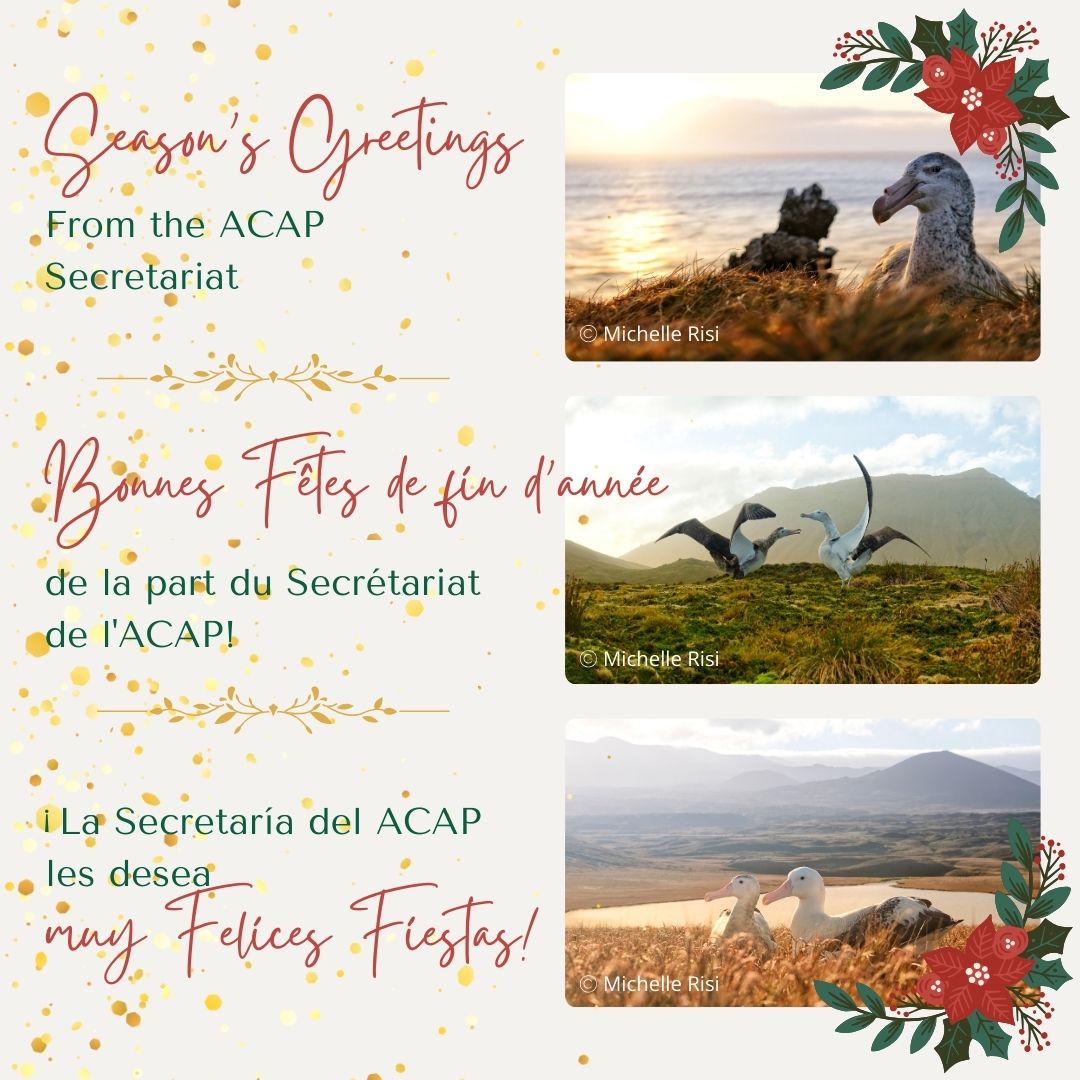

 George incubates the 2024/25 egg, December 2024, photogroph by Jon Plissner
George incubates the 2024/25 egg, December 2024, photogroph by Jon Plissner
